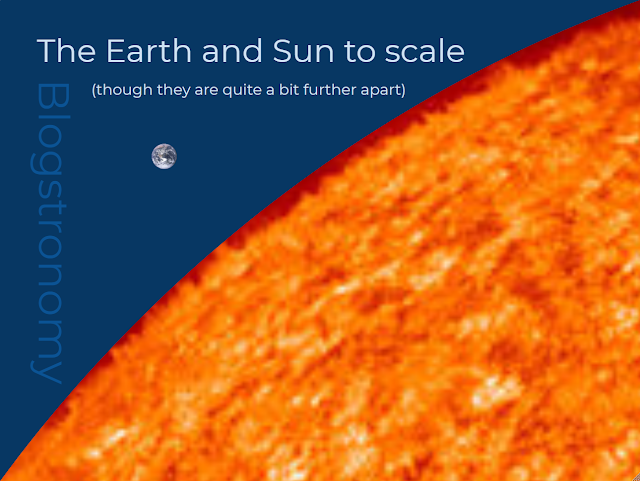What is a light year?
Many people hear the phrase 'light year' and, perhaps understandably, assume it to be a unit of time. But it isn't[1]: it's a unit of length, or distance.
Put another way, if an answer mentions light years the question probably involved something like "how far away is..." rather than anything like "how long would it take to...". The light year is part of a family of measurement units that includes familiar favourites like centimetres, inches, yards, metres, miles, and kilometres. It is very much not at home with units like minutes, hours, days, months or years (unless, of course, it's joining forces with them to describe something's speed).
It's not that well-known as a unit of measurement because it's far too big to be of much use to anyone measuring lengths or distances within our human experience here on Earth. Having said that, it's probably one of the more popularly recognised units that are used to measure big stuff on the scale of solar systems and galaxies (two other examples that have their own posts on this blog are the astronomical unit and the parsec).
So what is a light year?
Imagine this: it's New Year's Eve, and you're waiting in your space ship. You watch the clock tick forwards, and on the stroke of midnight you fire your engines, instantly reaching the speed of light.
[This is, of course, impossible, but go with it.]
Your ship pelts along at this impossible speed and you put your feet up, read a few books. Maybe watch a movie or twenty on the in-flight system. When your calendar gets back round to December you start to keep your eye on the clock. On New Year's Eve you get back into the pilot's seat, and as midnight gets closer you rest your hand on the brake. Tick, tick, tick... dead on the stroke of midnight you slam the brakes on and instantly come to rest.
[This is also impossible, but thanks for sticking with it so far.]
At this point, after one year of travelling at the speed of light you are exactly one light year away from your starting point.
 |
| One light year is defined as the distance that light travels in a year (in a vacuum) |
So, a light year is defined fairly simply as the distance that light travels in one year[2]. We can work out how long a light year is in a more familiar unit of measurement using a fairly well-known equation that you probably came across at school:
\[Distance = Speed \times Time \]
Though it might be more familiar in this form: \[ Speed = \frac{Distance}{Time} \]
If we know the speed of light (in metres per second, often shortened to m/s) and the time taken (in seconds, written as s) then plugging this into the first equation will give us a value for the distance (in metres, shortened to m).
The speed of light is about 300 million m/s and there are around 32 million seconds in a year, so:
\(Distance = Speed \times Time\)
\(Distance = 300,000,000 m/s \times 32,000,000s \)
\(Distance = 9,600,000,000,000,000m\)
That's almost ten quadrillion metres. Quite a long way.
Proper scientists (not me) have calculated the distance of a light year with a bit more accuracy, and state it to be \( 9.4605284 \times 10^{15}m \) [3], which isn't far off what we calculated above, but this number is so big it's hard to deal with, so how does it compare to other units of distance that we might be able to comprehend?
One light year (about ten quadrillion metres) is approximately the same
distance as:
- 10,000,000,000,000 (or 10 trillion) kilometres
- 6,000,000,000,000 (or 6 trillion) miles
- 63,000 (or 63 thousand) astronomical units
- 0.3 parsecs (or 3 tenths of a parsec)
Some light year facts
- The Earth is about 0.0000016 light years from the Sun.
- Voyager 1 is about 0.0032 light years away from us.
- The Oort cloud is about 1.6 light years in diameter.
- The Sun's gravity dominates local space out to about 2 light years away.
- The nearest star to us (other than the Sun) is about 4 light years away.
- The centre of the milky way is about 26,000 light years away.
- The milky way measures about 100,000 light years in diameter.
- Our nearest galaxy, Andromeda, is about 2,500,000 light years away.
- The edge of the visible universe is 46,500,000,000 away.
Have a question about this topic? Comment below! Got an astronomy related question of your own? Ask it here.
Footnotes
- Nor is it a year in which there are 20% fewer calories. [back]
- In a vacuum: this is important because light travels at different speeds depending on what it is travelling through. Hence, light can travel further in one year in a vacuum than it can through water, for example. [back]
- If you'd like help deciphering large numbers and 'standard form', why not head over to contact me with any mathematical queries you may have? [back]



What's the Oort cloud??????
ReplyDeleteAnd I have already had a lesson on parsecs!!!
ReplyDeleteAn Oort cloud sounds like it should be in Doctor Who - love it!
ReplyDelete